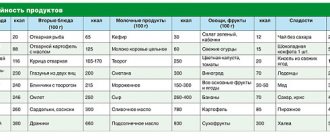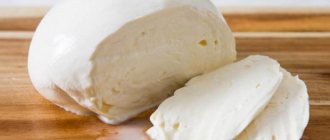How many calories are burned during a weight lifting workout? 100? 300? 500? More? Hundreds of studies have been conducted around the world on this matter. The number of calories you burn when lifting weights depends on many factors, including your age, weight, workout intensity, workout duration, and rest periods. On average, a single weight lifting workout burns between 200 and 400 calories per hour.
What are calories, what are they for, what functions do they perform?
Calories are units in which energy is measured. In fact, calories measure the amount of energy required to heat 1 g of water by 1 degree Celsius. Throughout the day, a person obtains calories (energy) from food and expends some energy during various activities.
For the normal functioning of all organs in the human body, it is necessary to consume about 2200 calories daily for men and 1800 calories for women.
Calorie consumption during various activities directly affects the presence of excess weight. If a person engages in physical activity every day, the energy expenditure of calories will be at a high level. And provided that a person consumes fewer calories than he expends, his fat reserves begin to decrease.
It is generally accepted that 1 kg of fat contains 7,000 calories. If the daily calorie intake is in excess, then every 7,000 calories turn into 1 kg of excess fat. To get rid of 1 kg of fat, you need to burn 7,000 calories through training and a deficit diet. The body will replenish lost energy using fat deposits.
Briefly about energy and calorie expenditure
Metabolic processes in the human body are directly related to energy exchange, since metabolism cannot exist without calorie consumption, as well as vice versa. Calories are a unit of energy measurement. The main expenditure of calories always occurs on the work of the main internal organs: the heart, respiratory system, liver, kidneys and some other organs. Even in a state of relative rest, there is a continuous energy expenditure. Scientists have found that on average, in one hour, approximately one kilocalorie is consumed for every kilogram of a person’s body weight, so it is not difficult to determine that a person loses approximately 1800 kcal per day. However, it is worth considering not only weight, but also gender, height, age, as well as the predominance of muscle or fat mass. To increase the consumption of kilocalories, of course, you need to perform as many active physical actions as possible, it is desirable that the muscle work be as intense as possible.
What factors influence the rate of calorie expenditure?
The main factor influencing energy expenditure is age. The older a person is, the slower the metabolism occurs in his body, which means that fat deposits accumulate more actively. Calorie expenditure is affected by heart rate.
An increase in heart rate leads to an increase in the amount of oxygen supplied, which the body requires for oxidative processes. In this case, blood moves faster through the vessels, delivering oxygen and nutrients to all parts of the body. Saturation of cells with oxygen leads to increased metabolism and intensive consumption of calories.
In order for the body to start burning calories, it is necessary to increase your pulse from 60% to 80% of the maximum heart rate (HR) and maintain these indicators throughout the entire workout.
For each person, individual indicators are calculated using the following formula:
- (220 – age) * 60%.
- (220 – age) * 80%.
For example, for a 20-year-old girl, the optimal heart rate interval will be:
- (220 – 20) * 0,60 = 120.
- (220 – 20) * 0,80 = 160.
To increase energy expenditure, it is enough for this girl to keep her pulse in the range from 120 to 160 beats per minute. Metabolism is affected by a person’s height and weight, and the percentage of fat and muscle tissue.
It is believed that girls have a much slower metabolism than men, since men by nature have tall height, more muscles and less subcutaneous fat due to the main male hormone - testosterone. Due to this fact, a woman needs to consume fewer calories per day than a man.
If a man is intensely involved in strength training and has less than 15% body fat, then the minimum required for energy intake from food increases.
For example, the average man with 23% body fat needs to consume 2,000 calories per day, with the rest going to body fat; An athlete with 15% body fat and a moderate amount of muscle already needs to consume at least 2800 calories. Girls have a more difficult time in this regard.
The female body normally produces a small amount of testosterone and a moderate amount of estrogen. With such a hormonal imbalance, it is difficult to build muscle, but you can burn excess fat if you do intense cardio, strength training and a balanced diet. Calorie consumption during various activities also depends on a person's daily activity.
With intense exercise of any load 2-4 times a week for 40-90 minutes, the minimum threshold for the number of calories consumed increases. The body needs to use more energy during the recovery period . Another factor influencing the energy consumption of an organism is a person’s profession.
Office work involves sedentary activity, which negatively affects metabolism. It is easier for office workers to succumb to temptations in the form of collective tea parties with sweets. Conversely, if a person works at a construction site, his metabolism is constantly at a high level, since his profession involves heavy physical activity.
Do strength training burn calories?
If you are crazy about a healthy lifestyle, proper weight loss and bodybuilding, then you know for sure that the effect of lifting weights is much more powerful than cardio exercises. There is one interesting fact - after strength training, calorie burning continues even after leaving the gym. This effect lasts about 36 hours after the end of a full workout. This theory was proven by a famous person in the world of fitness - Alwyn Cosgrove. He divided his subjects into three groups:
- Those who will engage only in healthy eating and aerobics;
- Those who, in addition to aerobics and diet, will engage in endurance exercises;
- Those who will simply go on a diet.
Participants in the first group lost about 8 kilograms in a year. They did aerobics three times a week and ate a healthy diet.
Participants in the third group (diet only) lost about 6 kilograms over the course of a year.
Participants in the second group (diet + aerobics + strength training) lost about 10 kilograms over the course of a year, which is 35-44% more than in the other two groups.
Conclusion: Aerobics does little to promote significant fat loss. It’s better then to just stick to a healthy diet and the effect will be almost the same. An ideal assistant in burning fat and hated calories is endurance exercise and weight lifting.
What to do?
The sad truth is that the majority of people (and the vast majority of them are women) do not get serious results from aerobic exercise, no matter how long they do it. Of course, any vigorous physical activity is better than none at all. But if you are really interested in good results that will last for a long time, then devote more of your attention to lifting weights. But don’t forget about the diet - what you eat will either speed up your progress or ruin it in the bud so that no amount of training will help.
The ideal option is a combination of cardio training and strength exercises!
Calorie consumption during sleep and rest
The human body uses a certain amount of energy even during sleep. Calorie consumption during this period is affected by the number of hours during which a person is in deep sleep. Scientists advise sleeping at least 7-8 hours a day. During this time, a woman’s body will burn approximately 400-500 calories; in a man’s body – 500-700 calories.
This effect is achieved due to the fact that a person does not receive calories from the outside during sleep, but his body continues to spend energy on physiological processes. For this reason, nutritionists advise not to eat food 3-4 hours before bedtime, so that the body has time to process the incoming calories before the person falls asleep.
Calorie expenditure at rest is the rate of basal metabolic rate, which takes into account only energy expenditure on the physiological processes of the body.
Calorie consumption in this case depends on the following factors:
- Floor.
- Age.
- Height.
- Weight.
- Constitution of the human body.
A twenty-year-old man who is actively involved in sports will burn 2 times more calories at rest than a forty-year-old office worker.
There is a formula that can be used to calculate your basal metabolic rate:
Men: (10 * weight in kg) + (6.25 * height in cm) – (5 * age) + 5
Women : (10 * weight in kg) + (6.25 * height in cm) – (5 * age) – 161
The above formulas may have an error of 3-5%, since the percentage of fat and muscle in the body is not taken into account.
Energy consumption of the body
Energy expenditure is the amount of energy that the body uses to maintain its vital functions, perform physical tasks, digest food, that is, perform basic functions.
The main exchange occurs during the functioning of the nervous, cardiovascular, respiratory, digestive, excretory, immune, reproductive, endocrine and other systems.
This is interesting! The largest amount of energy is consumed during the functioning of the nervous system, this figure reaches about 25% of the total amount (approximately 500 kcal). Digestive organs require up to 25% of energy (250 kcal). During the digestion of food, energy expenditure can increase by up to 40%, and the more difficult the food is to digest, the higher this figure. During blood pumping, approximately 80 kcal are spent. Even at rest (during brain function or sleep), energy continues to be consumed.
Scientists have found that in 60 minutes, approximately 1 calorie is consumed for every kilogram of total body weight. Based on this, the total energy consumption of a person is 1800 kcal. And this is only at rest (to ensure the vital functions of the body); during physical activity, energy consumption can increase significantly.
Basic metabolism includes those energy expenditures that the body performs to ensure basic functions (necessary movements, hygiene procedures, eating, talking). Additional exchange includes activities related to work, household chores, sports, etc.
To determine the amount of energy burned, you need to take into account the basic and additional metabolism.
Be sure to check out:
A table of caloric content of foods to help you lose weight properly. How to easily calculate the calorie intake and nutritional supplements for weight loss
Calorie consumption when running and walking
Running is considered to be the most energy-consuming activity. The amount of energy that the body will have to spend depends on the speed and intensity of running.
| Type of running | Calorie consumption per 1 kg of weight for 1 hour |
| 8 km/h | 7 |
| 10 km/h | 9 |
| 12 km/h | 9,7 |
| 16 km/h | 10,8 |
| Up the stairs | 12,4 |
| Down the stairs | 8,1 |
| Cross country | 8,7 |
| With your knees high | 11,4 |
Calorie consumption during various activities, such as Finnish walking.
Even regular walking affects the body's use of energy. Scientists estimate that you need to take 10,000 steps daily to maintain a normal metabolic rate. To increase energy expenditure, it is better to take walks in the fresh air so that the body receives a sufficient amount of oxygen.
| Type of walking | Calorie consumption per 1 kg of weight for 1 hour |
| Walking 4 km/h | 2,7 |
| Walking 6 km/h | 4 |
| Race walking | 6 |
| Walking uphill | 6,9 |
| Walking the dog | 2,5 |
Calories and air
We hear about calories all the time - now in one topic, now in another. They are blamed for many human sins and even for the fact that they are the ones who make us feel guilty about eating a fried cutlet at eleven o’clock in the evening.
I suggest dreaming a little about pleasant things. Let's take a step back now and think about the air we breathe. How we enjoy walking in nature, in the forest or at the sea, when we can breathe deeply and imagine that health itself is entering us with clean air. After such walks we feel invigorated and renewed. That’s why such walks are so useful on Sunday, before a long work week. Oxygen gives us this energy and we understand this very well.
Now think about the polluted air in the centers of crowded cities. The air there is so heavy that we can even imagine how, along with oxygen, a lot of unpleasant things enter into us, which ultimately often leads to illness.
I suggest looking at calories as well as air and oxygen . Calories fill us up and provide us with energy, so we should be grateful for that, as well as the foods that give them to us.
It is worth noting that we are talking about walking at an average pace, at a speed of about 5 km/h. It is more useful to walk not on straight asphalt, but on natural soil, especially when overcoming hummocks and ravines. Such walking can burn up to 300 kcal per hour.
How many calories does brisk walking burn?
You need to walk in small but frequent steps in a straight line. Keep your arms bent at the elbows. At the same time, fat accumulations will quickly leave your body, and excess calories will be dramatically reduced. Your buttocks will become more toned, your stomach will be flatter, and your legs will be slimmer.
It’s not a bad idea to take dumbbells with you to class; they should weigh no more than a kilogram. Active movements with a weight, throwing your left arm and right leg forward, need to be done only half the distance. Before starting such exercises, you should consult your doctor . In addition to race walking, there are several other types:
– this will make it possible to improve posture, strengthen the calf muscles, back, buttocks.
along which you will walk forward, your back should be
| The product's name | Kcal / 100 g |
| Beet | 50 |
| Bulb onions | 50 |
| Tomatoes | 10-25 |
| Boiled potatoes | 80 |
| Fried potato | 210 |
| Jacket potatoes | 95 |
| Carrot | 35 |
| Cucumbers, negative calories | 15 |
| White cabbage | 30 |
| Cauliflower | 30 |
| Green pea | 95 |
| Eggplant | 25 |
| Zucchini | 25 |
| Pumpkin | 30 |
| Bell pepper | 15 |
| Radish | 20 |
| Turnip | 30 |
| Celery | 20 |
| Asparagus | 20 |
| Corn | 110 |
| Swede | 28 |
| Champignon | 25 |
| Butter | 25 |
| White mushrooms | 25 |
Calorie consumption when swimming
Swimming is a good way to combine business with pleasure. Being in water helps strengthen muscles, cardiovascular and nervous systems, as well as improve mood. Swimming is an excellent choice for people who don't like the classic monotony of cardio or strength training. There are practically no contraindications for swimming in the pool.
In 1 hour of swimming, you can burn up to 700 calories, depending on the speed and intensity.
In addition to the fact that a person needs to make voluntary movements with his arms and legs, it is necessary to overcome the resistance of the water, which greatly increases the difficulty and increases calorie consumption. The rate of calorie consumption is also affected by the temperature of the water, since the body has to draw additional energy to prevent hypothermia.
The most optimal water temperature for this is 25-27 degrees. With such indicators, the human brain will perceive the water temperature as potentially dangerous to health, but the body will be comfortable in the water, and the body will spend 20-40 additional calories per hour. To maximize calorie consumption, you need to be in the water for at least 2 hours.
| Type of swimming | Calorie consumption per 1 kg of weight in 1 hour |
| Regular swimming 0.4 km/h | 3 |
| Fast swimming 2.4 km/h | 7,1 |
| Swimming crawl (slow/fast) | 7/8 |
| Breaststroke swimming | 10 |
| Butterfly | 10,3 |
What determines the rate of combustion?
Energy metabolism depends on gender, height, body weight, age, state of the endocrine system, etc.
People with a predominance of muscle tissue burn calories faster, which is due to the high caloric requirement of muscle tissue to maintain function.
If a person regularly subjects the body to physical activity, then his muscle mass increases, and energy metabolism increases to 8-15%. With a long absence of such activity, energy costs are reduced.
Basal metabolic rate increases during fever, as a person in this state needs more energy.
Expert opinion
Evgeniy Kislitsa
Practicing surgeon. Certified massage master. Two-time vice-champion and heavyweight champion of regional kettlebell lifting competitions.
This is due not only to an increase in heat transfer from the body, which requires an appropriate supply of energy. The increase in body temperature itself is the body’s reaction to the penetration of dangerous microorganisms into it and an increase in their population. When they enter the body, a complex cascade of immune reactions is launched with the participation of immune cells and biologically active compounds caused by their activity. This reaction is physiological and provides the body’s natural defense against infections. However, with excessive activity of immune reactions, the body is capable of causing harm to itself by damaging internal organs and an abnormal increase in temperature, when the properties of biological tissues, primarily proteins, begin to change.
The optimal air temperature for humans is 26°C; a higher or lower value requires energy expenditure. This is necessary to maintain body temperature at a level optimal for the functioning of the body (creating a temperature optimum).
Thus, the body spends about 75% of its energy per day to perform basic functions. Energy consumption for physical activity can also change, depending on the ambient temperature and many other factors.
Calorie expenditure in team sports
Some types of team sports are quite energy-intensive. Engaging in one of these sports can also significantly increase calorie consumption.
The most intense types of team competitions are played with a ball. 1st place among them is occupied by water polo, which involves burning 8.9 calories per 1 kg of weight in 1 hour. 2nd place is occupied by football and basketball, which use 6.4 and 5.3 calories, respectively. Next comes handball - 5.2 calories. Volleyball comes in last place with 3.6 calories.
Calorie consumption when working at a computer
Scientists from Canada have proven the fact of increased energy consumption during mental activity while working at a computer. To do this, the body spends on average 1.4 calories per 1 kg of weight for 1 hour, if the activity involves only working with the mouse.
When typing at high speed, consumption increases to 2.1 calories. When working continuously at a computer for 6 hours, you can spend about 12.6 calories per 1 kg of weight.
How many calories are spent in 1 hour of fitness?
As we have already said, calorie expenditure depends primarily on your weight, as well as on the physical activity itself.
Aerobic exercise and step aerobics require large amounts of energy . These are high-intensity workouts with complex, coordinated exercises. How many calories are spent in 1 hour of such a load also depends on the complexity of the workout.
So, a person weighing 60 kg will burn about 300 calories during a moderate workout , while an intense workout will burn 420 calories per hour! Step aerobics has even higher results of such training. Water aerobics also burns calories well; in one hour of such training you will burn about 300 calories.
Circuit training can also boast of such high performance.
In 1 hour of circuit training you can lose about 350-400 calories. In addition, such a load perfectly develops endurance.
If you have any elliptical trainer at home, do not let it sit idle. How many calories you burn in 1 hour on the elliptical trainer depends on your weight. At 55 kg you will burn about 500 calories, at 70 kg this figure will increase to 650 calories per hour, and at 83 kg it will be 800 calories !
Another exercise machine that can help you burn calories is an exercise bike . In 1 hour of very active exercise you can burn up to 700-800 calories. If the load is average, then you will spend from 400 to 600 calories, which is also an excellent result.
Energy expenditure and calorie expenditure during housework
Even simply doing everyday household chores requires the use of extra energy. And if you add other physical exercises to this (squats, jumping, bending), then calorie consumption can be doubled.
| Kind of activity | Calorie consumption per 1 kg of weight in 1 hour |
| Bed cleaning | 1,2 |
| Cleaning floors with a mop | 2,4 |
| Manual floor washing | 3,9 |
| Handwash | 1,9 |
| Dusting | 1,4 |
| Window cleaning | 1,9 |
| Cooking food | 1,5 |
| Work in the garden | 3,7 |
Fitness
Standard fitness classes are the most popular today. Good fitness trainers make appointments several months in advance, because they will be able to correctly adjust the load to achieve the goal in the shortest possible time.
However, the calorie consumption table places fitness only in fourth place: according to its data, when doing fitness, a person loses a maximum of 11 kcal/hour for every kg of his weight. Those. a person weighing 50 kg loses about 550 kcal for every hour of exercise, and if the athlete weighs 80 kg, then the consumption increases to 880 kcal.
Calorie consumption when dancing
Dancing is not only a beautiful sport. Dancing is a great way to strengthen your muscles and heart, increase your flexibility, improve your overall well-being and get rid of fat deposits.
Dancing involves the use of several muscle groups at the same time and the use of a variety of amplitude, intensity and strength movements.
All this together allows not only to strengthen muscles, but also to significantly increase calorie consumption, since intense body movements force the heart to work at an accelerated rhythm, and this increases the pulse.
| Type of dance | Calorie consumption per 1 kg for 1 hour |
| Pool dance | 5 |
| Hip-hop | 6,1 |
| Ballet | 9,1 |
| Ballroom dancing | 6,5 |
| Salsa | 6,3 |
| Bachata | 5,9 |
| Contemporary | 4,7 |
| Sports ballroom dancing | 9 |
| Rumba | 7,1 |
| Waltz | 8 |
| Strip of plastic | 5,3 |
| Tango | 4,3 |
| Locking | 8,3 |
| Tap dance | 7,8 |
| Crump | 6,4 |
| Variety dance | 8,2 |
| Russian folk dance | 9,1 |
| Woking | 4,1 |
How calories are burned with a quiet lifestyle
How many calories do you need to burn per day to lose weight?
In a state of calm
In a state of calm, the body still spends a certain amount of calories. Therefore, even without doing anything, you need to eat, otherwise the body may become exhausted. There is a formula that helps you understand how many calories each person needs at rest. Here you will need to know your body weight in kilograms, height in centimeters, age in years. Let our woman weigh 65 kilograms, have a height of 168 centimeters and her age reach 38 years. Then you get the following figure:
655+9,6*65+1,8*168-4,7*38=655+624+302,4-178,6=1402,8.
This is exactly how many kilocalories per day, as the calculator shows, you need to eat so that the body can burn all the energy received. If the question is about losing weight, then you need to consume less high-calorie foods or engage in physical exercise.
How many calories are burned during sexual intercourse?
In some articles you can see information that morning sex for 30 minutes replaces a full thirty-minute run. This statement is fundamentally incorrect, since even the most intense sexual intercourse is not capable of causing a woman’s body to burn more than 4.5 calories per minute, and a man’s body to burn more than 6.5 calories per minute.
Scientists conducted studies in which 20 volunteers took part. On average, sexual intercourse for each couple lasted no more than 30 minutes from start to finish. The highest calorie burn among women was 120 calories in 30 minutes; among men – 177 calories in 30 minutes.
According to the study, caloric expenditure during intercourse averaged 4 calories per minute in women and 5.9 calories per minute in men. Such indicators can only be compared with a light walk at a moderate pace or with an intense warm-up.
It all depends on the constitution of the body
What is the calorie consumption during fast walking, moderate or hard running? The truth is, it depends on how long and fast you run, and how much of an extra calorie you think you're burning. Surprised? You're not the only one who has worked on developing the perfect balance between what you eat and what you lose during exercise. Many studies show that women overestimate the number of calories they use daily, sometimes by almost 1000 times! Don't forget about the calorie calculator for weight loss - it helps balance the calculations to the optimal value.
The benefit of knowing how your body uses calories for fuel is that it can help you "fat up" and change your shape. Basics:
- What you don't use goes straight into reserves (stomach, thighs, buttocks).
- For every 3,500 calories you burn above your normal weekly intake, you'll lose about a pound. This is approximately the same amount of calories burned when squatting for 2 continuous hours.
- When you sit and read, you burn about one calorie per minute.
This number increases every time you stand, walk, or run to your phone because your body requires more energy to get the job done. If the calorie consumption when swimming in the pool is 500 kcal per session, do not forget to also take into account fees, transportation, changing clothes, etc.
Table of calorie consumption for other activities
Calorie consumption for various activities:
| Kind of activity | Calorie consumption per 1 kg of weight in 1 hour |
| Jumping rope | 8 |
| Gymnastics | 6,4 |
| Yoga | 6 |
| Tennis | 8,9 |
| Table tennis | 3,9 |
| Skiing (light/intense) | 5,9/8,9 |
| Figure skating | 3,9 |
| Cycling 9 km/h | 2,9 |
| Cycling 15 km/h | 6 |
| Cycling 20 km/h | 8 |
| Rollerblading | 4,9 |
| Mountaineering and mountain climbing | 9,9 |
| Ride a horse | 4 |
| Active games with a child | 4,8 |
| Aerobics | 4,9 |
| Bowling | 3,7 |
| Fencing | 4 |
| Golf | 2,9 |
| Climbing stairs | 8 |
| Shopping | 2,9 |
| Office work | 2 |
| Watching TV while sitting | 0,8 |
| Book reading | 1 |
Calories for professional activities
The situation is a little more complicated with counting calories spent on various types of professional activities. For example, a person who builds a house is called a builder. But it’s one thing to lay bricks or do installation, and quite another to lead a team and work with drawings and documents. But both activities relate to construction.
There are tables describing calorie expenditure for all kinds of activities. From them it becomes clear that the hardest time is for steelworkers and people who work with heavy hand tools. They spend 8.5 kcal per kilogram. It’s easiest for a bartender - 0.0439 kcal per kilogram (apparently, the nervous costs of communicating with not very adequate people are not taken into account).
The intensity of energy consumption depends on the chosen profession
Some idea of physical activity for various professions can be obtained from the following table (kilocalories per hour per kilogram of weight):
| a carpenter | 0,062 | truck driver | 2,1 | office worker | 1,24 |
| miner | 6,36 | police officer | 2,63 | clerk | 1,86 |
| builder | 5,82 | actor | 3,18 | working at the computer | 1,44 |
| firefighter | 12,66 | schoolboy/student | 1,86 | heavy equipment operator | 2,6 |
| forester | 8,54 | masseur | 4,2 | horse care | 6,4 |
| mason | 7,38 | coach | 4,2 | steelmaker | 8,5 |
What is the difference between the activities of a clerk and an office worker, why using a computer burns fewer calories than shuffling papers is very difficult to understand. Why a truck driver burns fewer calories than an actor or a police officer is unknown. Do not forget that the figures given here are very arbitrary; exact calculations are impossible and not necessary.
How to increase calorie expenditure?
Calorie expenditure during various activities can be significantly increased. To do this, you need to follow simple recommendations every day, which will require additional energy expenditure from the body.
This:
- Immediately after waking up, do not get out of bed, but do breathing exercises and the “bicycle” exercise . Breathing exercises saturate cells with oxygen, and the “bicycle” exercise helps strengthen joints and the musculoskeletal system, and also has a positive effect on the functioning of the intestinal tract and starts metabolism.
- Carry out morning procedures with cold water if possible: wash your face with ice water and take a cool shower.
- Next, you should drink 200-400 ml of cool (but not ice) water 20-30 minutes before meals. The body will give off energy to heat the water to a comfortable temperature.
- If time permits, it will be useful to do light exercises . If you have very little time, you can perform the “plank” exercise, which takes no more than 1 minute.
- Be sure to have breakfast . Skipping your first meal will lead to overeating throughout the day, which will slow down your metabolism.
- If possible, avoid using elevators and public transport; as much as possible and spend time outdoors . A sufficient amount of oxygen in the body has a positive effect on calorie expenditure.
- Drink 1.5-2 liters of clean cold water. Water directly affects metabolism.
- During the day, do not eat sweet pastries or processed foods as a snack . Once in the body, sugar causes an increase in insulin levels, which blocks the action of lipase. It is the lipase enzyme that helps release energy from fat cells, which leads to the burning of calories. And trans fats not only slow down calorie consumption, but also contribute to the accumulation of fat deposits.
- For dinner, choose foods rich in proteins and fiber .
- Go to bed no later than 22-00 . Scientists have proven that maximum calorie consumption during sleep occurs between 22:00 and 02:00.
Calorie consumption occurs constantly, regardless of the type of activity. With a balanced diet and various physical activities, the metabolic rate will be constantly high, and this will lead to increased burning of calories.
Article design: Anna Vinnitskaya











